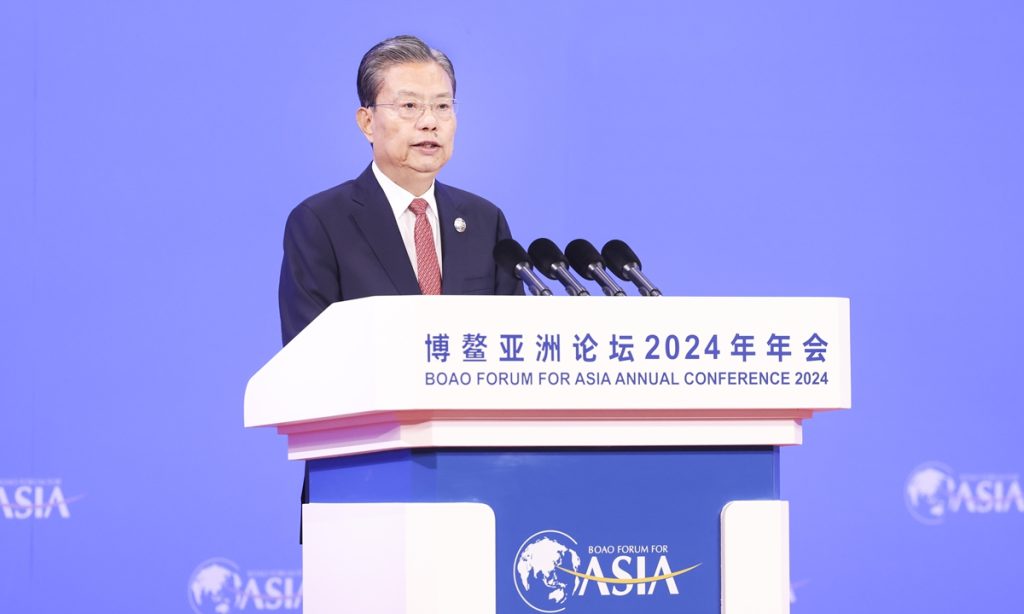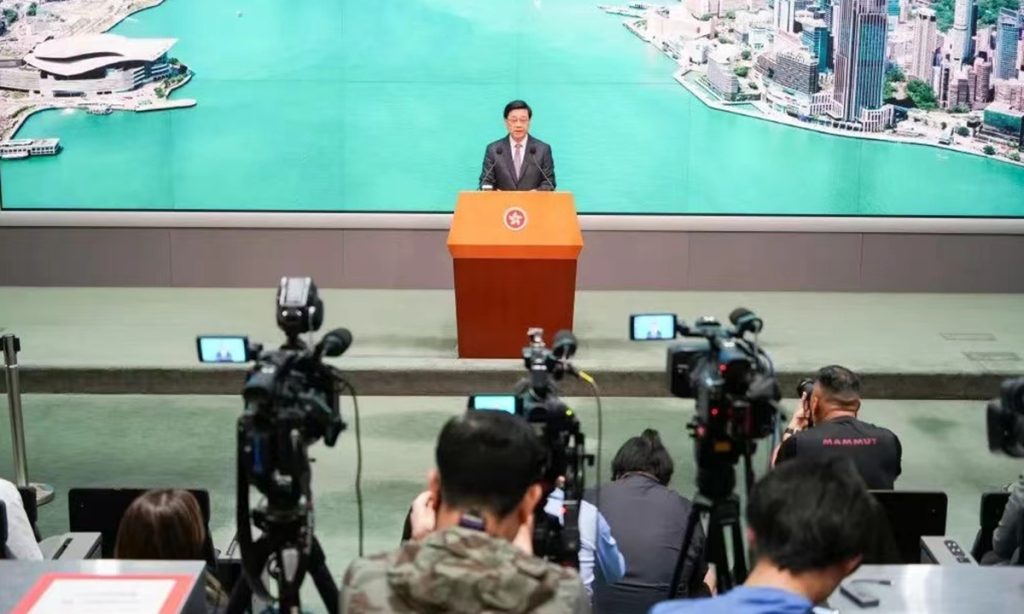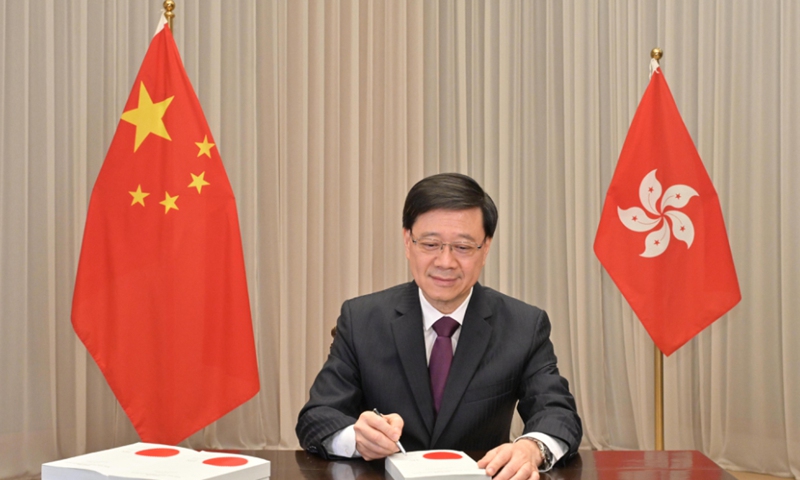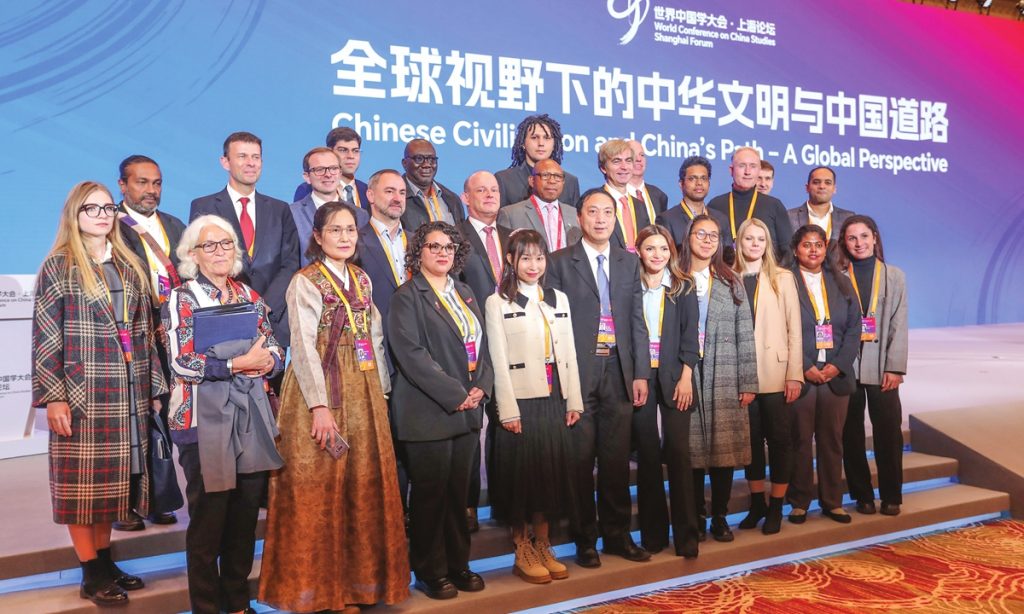Chinese modernization to inject strong impetus into world economy, top legislator says at Boao Forum

China's top legislator Zhao Leji on Thursday reaffirmed China's commitment to continuously opening its market to the world. He said that Chinese modernization through high-quality development will inject strong impetus into the global economy during a keynote speech at the opening ceremony of the Boao Forum for Asia (BFA) Annual Conference 2024.
At the BFA opening plenary session in Boao, South China's Hainan Province, regional and world leaders, including Kazakhstan's President Kassym-Jomart Tokayev, commended China's critical role and great contribution to global peace and development in Asia and around the world through its high-quality development and various global initiatives.
The BFA kicked off on Tuesday, one day after the China Development Forum (CDF) concluded in Beijing. Both the BFA and the CDF drew several regional and global leaders, multinational executives and academics. This year's BFA and CDF carried extra significance, as Chinese officials, through dozens of meetings, clearly mapped out the path for high-quality development and opening-up, which has obviously boosted confidence among the participants, experts said.
China opportunities
"China is advancing Chinese modernization on all fronts with high-quality development, which will inject strong impetus into the world economy, and provide more opportunities for the development of all countries, especially our neighbors in Asia," Zhao, chairman of the Standing Committee of the National People's Congress, China's top legislature, said at the opening plenary of the BFA on Thursday.
Noting a series of Chinese efforts to foster innovation-led, open and green development, Zhao said that China's door to the world will never close, but will only open wider, while inviting countries and businesses around the world to invest in China.
"Investing in China is investing in the future. All countries are sincerely welcome to board the express train of China's development and join hands to work for a global modernization featuring peaceful development, mutually beneficial cooperation and prosperity for all," Zhao said, as he urged all parties to reinforce confidence and join hands to build a community with a shared future for mankind, and create a better future for Asia and the world at large amid serious and complicated global challenges.
This message of China's commitment to high-quality development and high-standard opening-up has been reiterated by Chinese officials at both the CDF, which drew more than 100 international guests, including dozens of global CEOs, and the BFA, which has brought about 2,000 participants, including heads of states, from more than 60 countries. The message has also resonated well with many participants.
At the opening plenary of the BFA Annual Conference on Thursday morning, several regional and world leaders commended China's approach of openness, peace and development, while also rejecting protectionism and unilateralism.
"Indeed, we meet today against a backdrop of unprecedented global uncertainty, fueled by geopolitical turbulence and economic upheaval," Tokayev said at the opening session, noting that while challenges lie ahead, Asia is well positioned to continue driving global growth and development in the years to come.
"In this regard, the Boao Forum has emerged as an embodiment of the Asian innovative approach to achieving universal economic progress. It has also established itself as a prominent symbol of China's commitment toward global development," the Kazakh president said.
Based in China, the BFA has become a premium platform for discussions on regional and global affairs since its inception over two decades ago. And the forum continues to gain popularity and prominence, as more countries are participating in the BFA Annual Conference and more countries and regions join in the platform.
This year, Nauru, a Pacific Island country, participated in the BFA Annual Conference for the first time, Nauruan President David Adeang said in remarks at the opening plenary session in Boao.
"I am honored to be here to share our perspectives as a Pacific, small island, developing state. We are grateful for this forum, for providing this critical platform to address the pressing challenges that confront the Asia-Pacific region and the world," said Adeang, who has been in China for a state visit after the two countries recently established diplomatic ties.
"Nauru has recently established bilateral relations with China to recognize and support wholeheartedly the one-China principle. This partnership puts Nauru on the right side of its history and benefits both our nations and fosters mutual respect developments and prosperity," Adeang said. He noted that China's vision for promoting economic globalization and creating new prospects for growth and development is vital for small countries such as Nauru.
Boosting confidence
Such sentiments toward China's contributions to regional and global development have been echoed by other participants throughout the BFA Annual Conference in Boao, showing that China's clear signal of continuous development and opening-up has boosted confidence among government officials, business executives and academia.
"What really stood out at this year's CDF and the BFA is that China clearly laid out its path for high-quality development and cooperation with the rest of the world. This has drawn great enthusiasm among foreign guests in our discussions," Wang Yiwei, a professor at the School of International Relations at Renmin University of China, who attended both the CDF in Beijing and the BFA in Boao, told the Global Times on Thursday. "There have been some noises claiming that China talks a lot about opening-up, but hasn't done enough. However, this time China has shown concrete steps."
In recent months, China has taken a slew of measures to further open its market to the world. It has waived visa requirements for citizens of many countries in Asia and Europe, boosting people-to-people exchanges. This year's Government Work Report said that China will lift all restrictions on foreign investment in the manufacturing sector. It has released a nationwide negative list for the services sector, which further expanded access for foreign businesses. It has also issued a 24-point action plan to improve business environment and attract foreign investment.
Despite China's concrete opening-up measures, Western media outlets, in their relentless campaign to smear the Chinese economy, have been painting a picture of deteriorating environment in China for foreign businesses. But over the past week or so at both the CDF and the BFA, senior Chinese officials' back-to-back meetings with multinational business executives put on a vivid display of China's openness, in contrast to some Western governments' rising protectionism and hostility toward foreign businesses.
Some foreign experts attending the BFA also said that China's business environment has improved and the country has become more attractive for global businesses.
In addition to China's continuous opening-up, China's clear path to pursuing innovation-led and green development has also drawn great interest from foreign officials, business leaders and academics at both the CDF and the BFA. "As China made the path clear for innovation and green transition, they are very interested," Wang said.
"China has shown the world how to build renewable energy assets at scale, it has shown us how to drive down the cost of renewable energy, and… it must show us how to use them," Andrew Forrest, chairman and founder of Australian iron ore giant Fortescue Metals Group (FMG), said at the BFA on Thursday, according to a transcript FMG sent to the Global Times.
Forrest enthusiastically called for cooperation among Asian countries to protect the environment and tackle climate change. "Once again, Asia, we can be the example, we can be the proof of what a peaceful, pollution free world must follow," he said, adding that fostering cooperation to improve the standard of living for everyone is what the BFA stands for.








